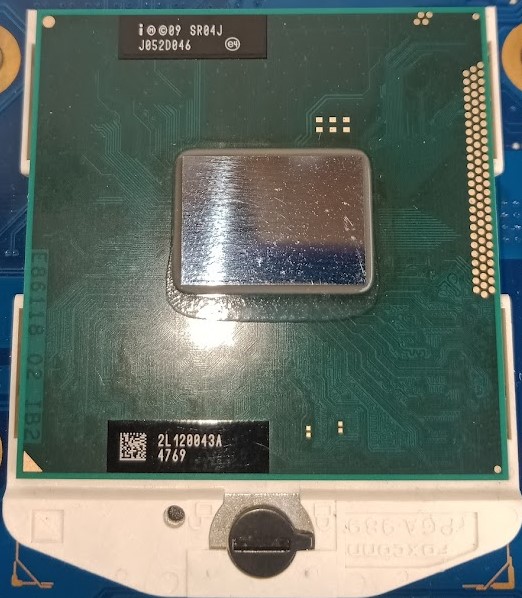wPrime - 32M score 23sec 73ms with a i3-2330M
Thursday, 01 January 1970 07:00 | Update at null
Media Gallery
Screenshot

Device, Setup, etc



URL
https://hwbot.org/submission/5130938-
Information Detail
Hardware: Intel Core i3 2330M
Specs:CPUID : Intel(R) Core(TM) i3-2330M CPU @ 2.20GHz
Architecture : x86
Codename : Sandy Bridge
L3 Cache : 3MB
Clock : 2.20GHz
Core/Thread : 2/4
TDP : 35W
Technology : 32nm
Socket : PPGA988
IGPU : Intel HD Graphics 3000 Mobile
See more specification...
Software: wPrime - 32M
Score: 23sec 73ms
About: wPrime - 32MwPrime - 32M is a computational math-based benchmark designed to measure processor performance by calculating prime numbers using a multi-threaded algorithm. In the 32M test, the benchmark calculates all prime numbers up to 32 million, with the main focus on execution speed and CPU processing efficiency. Unlike many other benchmarks that may only rely on a few cores, wPrime fully utilizes all available cores and threads on a processor, giving a very accurate picture of a CPU's multi-core scalability.
wPrime test results are usually reported in time (seconds), where the lower the time taken to complete the calculation, the higher the performance of the processor being tested. Due to its heavy and complex workload, both on the CPU and memory (RAM) side, wPrime - 32M is often used by overclockers and engineers to test system stability when overclocked and as a benchmark in comparing CPU performance in intensive parallel computing scenarios.
Overall, wPrime - 32M is a very popular and effective benchmark tool for assessing the parallel processing power of modern processors, especially for those looking to test the limits of heavy-duty hardware, both in the professional world and hobby testing.
The Intel Core i3-2330M is a dual-core mobile processor launched in 2011 as part of Intel’s second-generation Sandy Bridge lineup. Designed for mid-range laptops, this processor features 2 cores and 4 threads thanks to Intel Hyper-Threading Technology, allowing it to handle light to moderate multitasking workloads efficiently. Operating at a fixed clock speed of 2.2 GHz and built on the 32nm process, the i3-2330M does not include Intel Turbo Boost, which limits its ability to dynamically increase performance under heavier loads, but it remains a solid choice for everyday use.
With a TDP of 35W, the i3-2330M balances power consumption and performance reasonably well for its era. It integrates Intel HD Graphics 3000, a GPU with a base clock of 650 MHz and a dynamic frequency up to 1.1 GHz. While not designed for modern gaming or demanding graphic applications, this integrated GPU handles HD video playback, basic 3D rendering, and older or lightweight games at low settings with relative ease. Users looking for casual computing and multimedia playback will find it sufficient.
In real-world usage, the Core i3-2330M performs well for standard computing tasks such as web browsing, streaming, office productivity (e.g., Word, Excel), and simple photo editing. Its Hyper-Threading capabilities give it a performance edge over older dual-core processors that lack thread duplication. However, the lack of Turbo Boost and a relatively low base frequency mean that it can struggle under CPU-intensive workloads like video rendering or large spreadsheet processing, especially when compared to more modern CPUs.
This specific configuration was tested on a SAMSUNG 300E4Z, a laptop originally shipped with an Intel Celeron B815 processor but later upgraded to the i3-2330M for better performance. With 4GB of DDR3 dual-channel memory and Windows 7 installed, the system runs smoothly for basic daily use, making the i3-2330M a practical upgrade option for budget-conscious users seeking improved performance without replacing their entire system.
Hardware Detail:
Device: SAMSUNG 300E4Z (This device originally used Celeron B815 which was upgraded to i3 2330M.)
RAM: 4GB DDR3 Dual Channel
OS: Windows 7
* Not Avaiable
